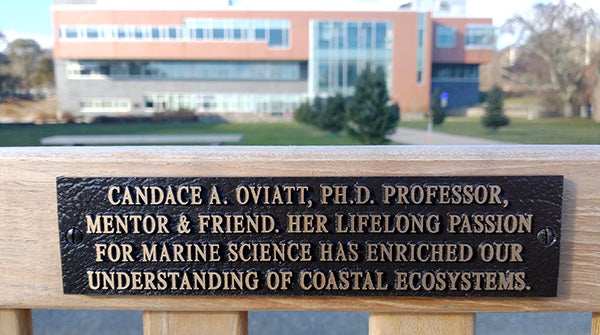Candace has been a stalwart member of the Bay Campus community since its founding. In 2021, she received URI’s Distinguished Achievement Award. She enrolled in the URI Graduate School of Oceanography in 1961, the year it was established, and in 1967 was the first woman to earn a Ph.D. at GSO
Few know Narragansett Bay better. As a professor of oceanography, Oviatt’s research has focused on coastal ecosystems (including using experimental mesocosms) examining nutrient, carbon, and benthic water column cycling. Candace continues to pursue an active research program focused on climate change in coastal systems and to advise students, reinforcing her commitment to train the next generation of scientists.
Thanks to her curious, hard-working, and collaborative nature, Candace is an internationally known expert in coastal ecology, and a role model and mentor for many.
In October, 2021, a new bench on URI’s Narragansett Bay Campus was dedicated in her honor….


